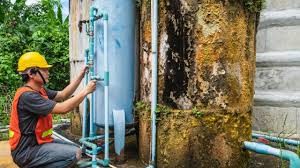Stories you may like
Botanist
A botanist specializes in the scientific study of plants, encompassing their taxonomy, physiology, ecology, evolution, and distribution. Botanists play an important role in understanding and conserving plant life, contributing to diverse fields such as agriculture, environmental science, and biodiversity conservation. They may work in various settings, including universities, botanical gardens, government agencies, and private organizations, conducting research to uncover the complexities of plant biology.
Botanists often collaborate with other scientists, policymakers, and conservationists to address environmental challenges, protect endangered plant species, and advance our understanding of the intricate relationships between plants and their environments. Their work is instrumental in addressing issues such as climate change, habitat loss, and the conservation of plant biodiversity, contributing to the overall well-being of ecosystems and human societies.
Botanists help us to understand and appreciate the natural world around us. Plants are the foundation of all life on Earth, and without them, we could not survive. Botanists help us to understand how plants work, how they interact with other organisms and the environment, and how we can use them to sustain ourselves.
Duties and Responsibilities
The duties and responsibilities of botanists can vary depending on their area of expertise, but some of the most common tasks they may be responsible for include:
- Conducting Research: Botanists are responsible for conducting scientific research on plant life. This may involve studying the genetics, physiology, ecology, or taxonomy of different plant species. They may also be responsible for conducting fieldwork to collect plant specimens and data.
- Analyzing Data: Botanists analyze data gathered during their research to draw conclusions and make recommendations based on their findings. They use statistical methods and computer software to analyze data and create reports, presentations, and other materials to share their results.
- Teaching and Mentoring: Many botanists work in academic settings and are responsible for teaching courses, mentoring students, and advising graduate students. They may also give presentations to the public or to other scientists.
- Managing Collections: Botanists working in museums, botanical gardens, or herbaria are responsible for managing collections of plant specimens. This may involve cataloging, preserving, and storing specimens, as well as loaning them to other institutions or researchers.
- Consulting: Botanists may be hired by private industry, government agencies, or other organizations to provide expertise and advice on issues related to plants. This may include consulting on environmental impact assessments, land management, or the development of new products or technologies.
- Writing and Publishing: Botanists are responsible for writing and publishing research papers, articles, and books to share their findings with other scientists and the public. They may also contribute to grant proposals or scientific reports.
- Collaborating: Botanists often work collaboratively with other scientists, including biologists, chemists, and environmental scientists. They may also collaborate with policymakers, land managers, and other stakeholders to address issues related to plant conservation and management.
Types of Botanists
There are several types of botanists, and their job responsibilities may vary based on their field of specialization. Here are some of the main types of botanists and what they do:
- Horticulturists: Horticulturists apply their knowledge of plant growth and development to cultivate and manage plants for food, ornamental, and medicinal purposes.
- Arborists: Arborists specialize in the care and maintenance of trees, including tree health assessments, pruning, and tree risk management.
- Molecular Biologists: Molecular biologists study the genetic and molecular mechanisms that control plant growth and development. They investigate how genes are expressed and regulated, and how this affects plant traits.
- Plant Taxonomists: Plant taxonomists classify and identify plants based on their physical and genetic characteristics. They are responsible for creating a system of classification for plants and documenting their distribution, growth habits, and ecological relationships.
- Ethnobotanists: Ethnobotanists study the relationship between plants and humans, including the use of plants in traditional medicine, food, and cultural practices. They work with indigenous communities to document and preserve traditional plant knowledge.
- Plant Physiologists: Plant physiologists study the biological processes that occur within plants, including photosynthesis, respiration, and growth. They investigate how plants respond to environmental factors such as light, temperature, and water availability.
- Plant Ecologists: Plant ecologists study the interactions between plants and their environment, including other organisms, soil, and climate. They investigate how plant populations are affected by environmental factors and how they, in turn, affect the ecosystem around them.
- Paleobotanists: Paleobotanists study the fossilized remains of plants to understand their evolutionary history and the environmental conditions in which they lived.
- Plant Pathologists: Plant pathologists specialize in the study of plant diseases, identifying pathogens, developing control measures, and working to improve plant health.
- Mycologists: Mycologists specialize in the study of fungi, including their taxonomy, ecology, and potential applications in areas such as medicine and industry.
- Phycologists: Phycologists study algae, including their taxonomy, physiology, and ecological roles in aquatic environments.
- Conservation Botanists: Conservation botanists work on the conservation and preservation of plant species, often dealing with endangered or threatened plants and their habitats.
- Plant Geneticists: Plant geneticists investigate the genetic makeup of plants, including the study of plant breeding, genetic modification, and molecular genetics.
- Systematists: Systematists examine the evolutionary relationships among plants and contribute to the understanding of plant biodiversity and evolution.
workplace of a Botanist Like
The workplace of a botanist can vary depending on their area of specialization and the nature of their work. Many botanists work in universities or research institutions, where they conduct research, teach students, and collaborate with other scientists. They may also work in government agencies, such as the Department of Agriculture or the National Park Service, where they may be involved in conservation efforts, land management, or environmental regulation.
Fieldwork is an important aspect of many botanists' jobs, especially for those studying plant ecology or conducting plant surveys. This can involve traveling to remote locations to collect plant specimens or to observe plant communities in their natural habitat. Fieldwork may be physically demanding, requiring botanists to hike long distances, work in harsh weather conditions, or conduct experiments outdoors.
Laboratories are also a common workplace for botanists, especially those studying plant physiology or molecular biology. In these settings, they may use sophisticated equipment such as microscopes, DNA sequencers, or spectrometers to study plants at the cellular or molecular level. Botanists may also work in greenhouses or growth chambers, where they can control the environmental conditions to study plant growth and development.
In addition to their traditional workplaces, botanists may also work in industries such as agriculture, pharmaceuticals, or biotechnology. For example, they may develop new plant varieties that are more resistant to pests and diseases, or they may study plant compounds for their potential medical applications.
How to become a Botanist
Becoming a botanist involves a combination of education, practical experience, and a passion for plants and their ecosystems. Here's a guide on how to pursue a career as a botanist:
- Educational Background: In high school, take courses in biology, chemistry, and environmental science to build a strong foundation in the sciences. After graduation, pursue a Bachelor's Degree in Botany, Biology, Plant Science, or a related field. Ensure that the program includes coursework in plant taxonomy, ecology, physiology, and evolution.
- Gain Relevant Experience: Seek internships, volunteer positions, or research opportunities to gain hands-on experience. This can include working in botanical gardens, research institutions, or with environmental organizations.
- Advanced Education (Optional): Consider pursuing a master's or Ph.D. for advanced research positions or academic roles. This is particularly important for those interested in leading research projects, teaching, or advancing to higher positions within the field. Botany encompasses various specializations, including plant taxonomy, ethnobotany, plant ecology, and more. Identify your specific area of interest and expertise.
- Networking: Join botanical societies and organizations such as the Botanical Society of America. Attend conferences, workshops, and events to network with professionals in the field.
- Job Search and Application: Highlight your education, relevant experience, and skills in a well-crafted resume. Look for entry-level positions such as research assistant, botanical technician, or environmental consultant to start your career in botany.
- Continued Learning: Botany is a dynamic field, and staying informed about new research and advancements is essential. Attend workshops, read scientific journals, and continue learning throughout your career. While not always necessary, certifications in specific areas of botany or environmental science may enhance your credentials.
Certifications
Certifications for botanists present valuable opportunities for professional development and expertise recognition. Here are some certifications and their respective organizations:
- Certified Arborist (ISA): Offered by the International Society of Arboriculture (ISA), this certification showcases expertise in tree care, encompassing identification, diseases, and management.
- Ecologist Certification (ESA): Provided by the Ecological Society of America (ESA), this certification is relevant for those in plant ecology, offering a broader ecological perspective.
- Wetland Professional Certifications (SWS): Options such as Wetland Professional in Training (WPIT) and Professional Wetland Scientist (PWS) are available through the Society of Wetland Scientists (SWS) and suit botanists involved in wetland ecology.
- Certified Professional in Erosion and Sediment Control (CPESC): Administered by EnviroCert International, Inc., this certification is valuable for botanists in environmental consulting, focusing on erosion and sediment control practices.
- Certified Ecological Restoration Practitioner (CERP) (SER): Offered by the Society for Ecological Restoration (SER), this certification is relevant for botanists involved in ecological restoration, demonstrating expertise in restoring ecosystems.
- Certified Crop Adviser (CCA) (ASA): Provided by the American Society of Agronomy (ASA), this certification is applicable for botanists in agriculture, covering crop management and environmental stewardship.
- Wilderness First Responder (WFR): Various providers, including NOLS and SOLO, offer this certification. It is particularly beneficial for field botanists, providing training in wilderness medicine for emergencies in remote locations.
- Professional Wetland Scientist Certifications (SWS): Options like Professional Wetland Scientist Associate (PWSA) and Professional Wetland Scientist (PWS) are offered by the Society of Wetland Scientists (SWS), demonstrating expertise in wetland delineation, assessment, and restoration.
The skills needed for a Botanist:
Technical / Hard Skills
1. Plant Identification & Classification – Ability to recognize and classify plants using taxonomy and systematics.
2. Research & Data Analysis – Conducting experiments, analyzing ecological or genetic data, and using statistical tools.
3. Laboratory Techniques – Knowledge of microscopy, tissue culture, molecular biology, and genetic testing.
4. Fieldwork Skills – Collecting plant samples, conducting surveys, soil analysis, and ecological monitoring.
5. Knowledge of Plant Physiology & Ecology – Understanding how plants grow, adapt, and interact with their environment.
6. Geographic Information Systems (GIS) & Mapping– Useful for ecological and environmental studies.
7. Herbarium Management – Preserving and cataloging plant specimens for research.
8. Computer & Software Skills – Familiarity with research software, databases, and tools like R, SPSS, or Python for analysis.
Soft Skills
1. Observation & Attention to Detail – Detecting subtle differences in plant species and environmental conditions.
2. Critical Thinking & Problem-Solving – Applying scientific methods to solve agricultural, environmental, or genetic issues.
3. Communication Skills – Writing research papers, preparing reports, and presenting findings clearly.
4. Teamwork & Collaboration – Working with other scientists, farmers, or conservationists.
5. Patience & Perseverance – Many botanical studies require long-term observation.
6. Adaptability – Working in diverse conditions, from laboratories to challenging outdoor environments.
7. Environmental Awareness– Understanding sustainability and conservation principles.
Practical Knowledge
- Agriculture and crop science (for applied botanists).
- Conservation and biodiversity management.
- Climate change impact on flora.
- Biotechnology and genetic engineering (for modern plant research).
Educational Requirements
1. Bachelor’s Degree (Minimum Requirement)
- In Botany, Plant Science, Biology, Environmental Science, Forestry, Agriculture, or a related field.
2. Master’s Degree (Preferred for Research Roles)
- Specialization in Plant Physiology, Ecology, Genetics, Taxonomy, Biotechnology, or Conservation.
3. Ph.D. (Required for Academic / Advanced Research Positions)
- For university teaching, leading research projects, or specialized government/industry roles.
Experience Requirements
- Entry-Level: Internship, laboratory assistance, or fieldwork during studies.
- Mid-Level: 1–3 years of experience in research labs, botanical gardens, agriculture, or conservation projects.
- Senior-Level: 5+ years with a strong research/publication record or project management experience.
Key Skills Required
- Plant identification, classification, and taxonomy.
- Research, data collection, and statistical analysis.
- Lab techniques (microscopy, molecular biology, tissue culture).
- Fieldwork (sampling, surveying, GIS mapping).
- Report writing and scientific communication.
- Knowledge of conservation practices and environmental sustainability.
- Ability to use research software (R, SPSS, Python, GIS tools).
Personal Competencies - Strong observation and analytical thinking.
- Attention to detail and accuracy in research.
- Good communication (written & verbal).
- Teamwork and collaboration across disciplines.
- Adaptability to work in lab, office, and outdoor field conditions.
- Passion for plants, ecology, and environmental conservation.




User's Comments
No comments there.